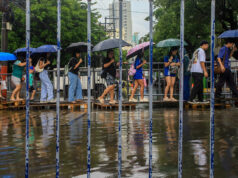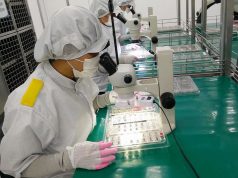Natixis analysts allay concerns over increasing trade and fiscal deficits
THE PHILIPPINES can be expected to sustain a bigger trade deficit this year, but this should not be a source of concern for the economy which itself is projected to grow strongly and attract more foreign capital, a France-based investment bank said in a June 29 report.
The aggressive infrastructure push of the current administration will likely sustain import demand and cause wider trade and fiscal deficits, Natixis said, but the same program will likewise attract more foreign direct investments (FDI) to the Philippines that would help keep the country’s external position robust.
“Corporates are investing more, loan growth has been double digits since 2016. And added to this is a push to raise public investment by the new administration…,” Natixis analysts said in the report.
“As spending and investment rise, import demand, as expected, naturally increases.”
Economic managers of President Rodrigo R. Duterte have unveiled plans to spend P8.4 trillion until 2022 on state-funded infrastructure projects under the “Build, Build, Build” initiative, as the government looks to raise the share of its infrastructure spending to an equivalent of 7.4% of gross domestic product (GDP) from 4.7% in 2016.
This is expected to help boost GDP growth to as fast as 7-8% annually from 2018 to 2022 from a targeted 6.5-7.5% this year and an actual 6.9% in 2016.
That faster pace of economic growth, in turn, is projected to slash unemployment rate to 3-5% by 2022 — when the current government steps down — from 5.5% last year and achieve its bottom line of cutting the national poverty rate to 14% also by then from 21.6% in 2015.
The government intends to support the additional spending through fresh revenues from up to five tax reform packages, teh first of which was approved by the House of Representatives in May and now awaits Senate approval. The first tranche provides an additional stream of revenues from higher excise taxes on cars, fuel and sugar-sweetened drinks as well as from fewer value-added tax exemptions that will offset revenues to be foregone from lower personal income tax rates.
“We believe these pro-growth [measures] to be positive for economic expansion and will help the Philippines maximize its demographic dividend,” economists Trinh Nguyen and Nordine Naam said.
“That said, they will cause the fiscal deficit to widen and the current account to turn into negative this year and the next.”
The current account posted a $318-million deficit in the first quarter as imports continued to outpace the growth in outbound shipment of goods.
The Bangko Sentral ng Pilipinas (BSP) expects a $600-million current account deficit for 2017, reversing a $601-million surplus last year.
The current account deficit likewise pulled the January-March external payments position to a $994-million deficit before being trimmed to a $136-million gap as of end-May.
“This means that unless remittance growth increases significantly or the BPO (business process outsourcing) sector outperforms — not our base case scenario — the merchandise trade deficit will continue to widen,” Natixis added.
“And that means the current account, too, will turn negative from previous years of positive.”
The BSP expects remittances to log a fresh high at $28 billion this year from 2016’s $26.9 billion, which will help offset outbound flows.
The Philippines’ young work force and the government’s infrastructure push will also entice more international investors to set up shop here, not to mention state plans to trim corporate income tax rates to 25% from 30% as a core part of the second tax reform package that will be submitted to Congress by next quarter.
“One positive consequence of this pro-growth strategy is the increase of investors’ appetite for long-term investment in the Philippines,” the analysts said.
“We expect FDI to be robust this year and the next, offsetting some decline of the current account and deterioration of portfolio investment.”
The US State Department said in a June 29 report that Philippines has become a “more attractive” investment destination, despite existing constraints such as foreign ownership limits, poor infrastructure, corruption and red tape. That followed the World Investment Report 2017, published on June 8 by the United Nations Conference on Trade and Development, in which “[t]op executives” counted the Philippines “among the most promising host countries” for FDI.
The central bank projects FDI net inflows to hit $8 billion this year, up from 2016’s record $7.93 billion. — Melissa Luz T. Lopez



